Upholstery plays a crucial role in interior design, breathing life into your furniture and contributing to the overall ambiance of a room. If you’ve got an old, tired-looking chair that needs a facelift, learning how to reupholster it can be a game-changer, which you can showcase as a focal furniture piece in your home’s foyer.
In this step-by-step guide, we will show you how to reupholster a chair like a pro, revitalizing your space with a touch of DIY magic.
Table of Contents:
- Materials and Tools You’ll Need
- Preparing Your Workspace
- Selecting the Right Upholstery Fabric
- Stripping Down the Old Upholstery
- Measuring and Cutting Fabric
- Padding and Reupholstering
- Finishing Touches
- Caring for Your Reupholstered Chair
Materials and Tools You’ll Need
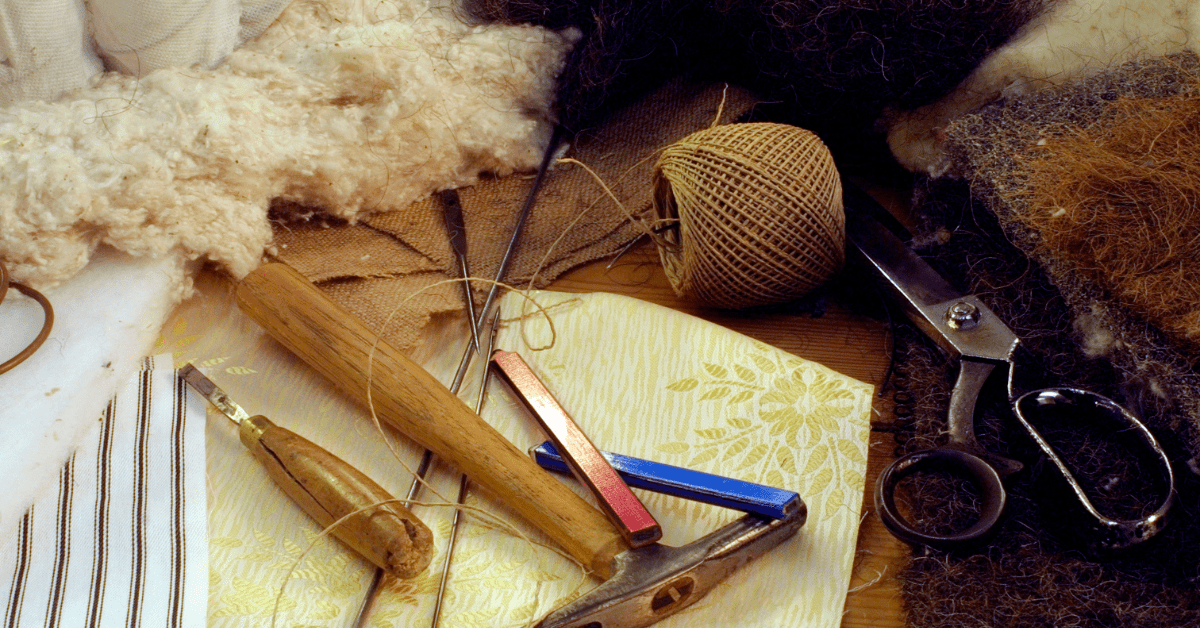
Before diving into your reupholstering project, gather the following materials and tools:
- Upholstery fabric: Choose a fabric that suits your style and complements your room’s aesthetics.
- Staple gun: An essential tool for securing the fabric to the chair frame.
- Screwdriver: For removing any screws or fasteners.
- Foam padding: To provide comfort and enhance the chair’s appearance.
- Pliers: Handy for removing staples and old upholstery.
- Scissors: For cutting fabric and trimming excess material.
Selecting the right materials is crucial, as it can greatly influence the final result of your reupholstery project.
Preparing Your Workspace
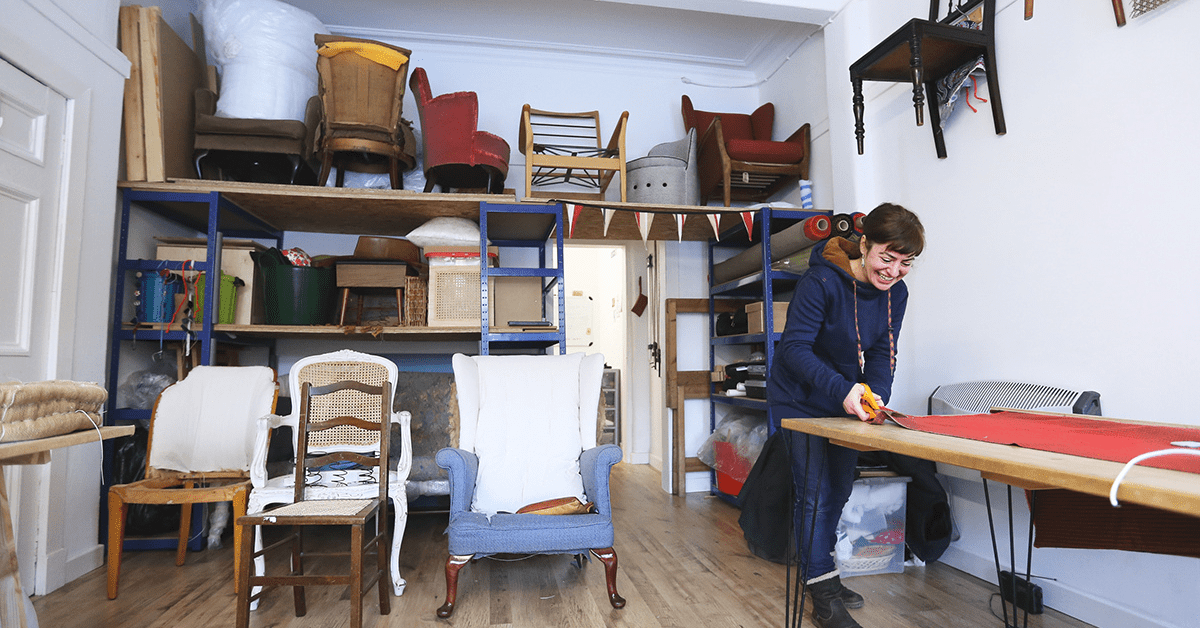
Set up a dedicated workspace with plenty of room to maneuver. Ensure it’s well-lit and clean, as reupholstering can get a bit messy. Don’t forget to wear protective gear like safety goggles and gloves to keep yourself safe during the process. Remove the chair from your living space and place it in your workspace to start the transformation.
Selecting the Right Upholstery Fabric
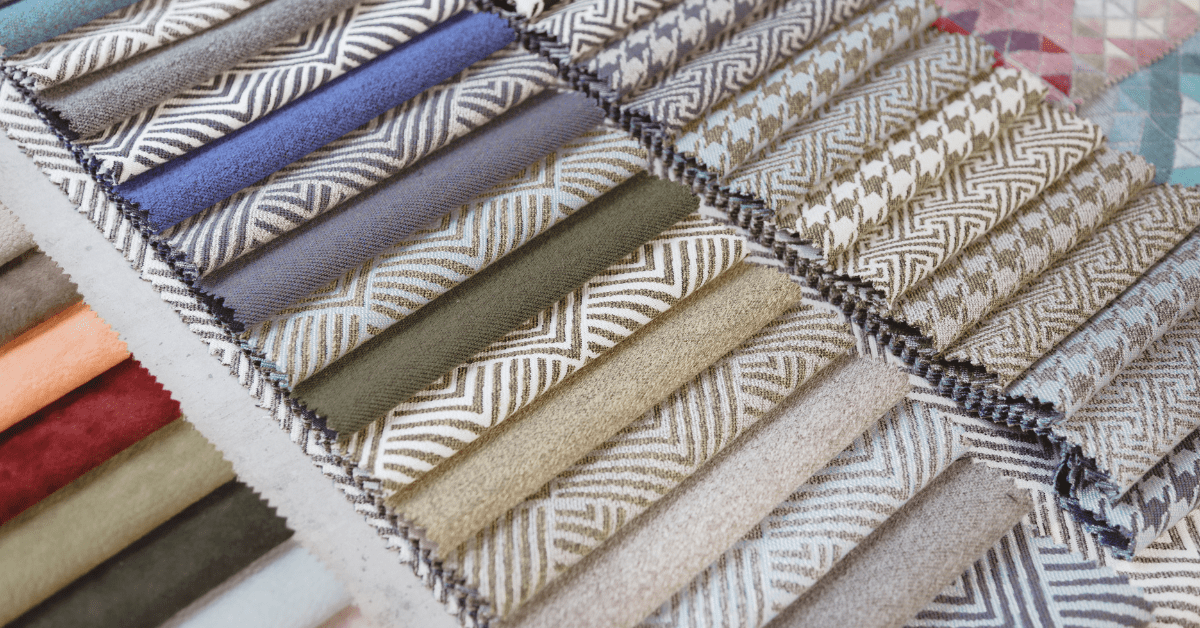
The choice of upholstery fabric is a pivotal moment in your reupholstery project. The fabric you choose will determine the chair’s comfort, aesthetics and how well it complements your room. To make the perfect selection, consider the following tips:
- Purpose and Location: Think about where the chair will reside and how it will be used. If it’s in a high-traffic area like the living room, consider a more durable fabric that can withstand wear and tear. For a bedroom or occasional chair, you can opt for a more delicate but luxurious fabric.
- Fabric Options: The world of upholstery fabric is a treasure trove of possibilities. From the timeless elegance of cotton to the refined beauty of linen and the opulent richness of velvet, each fabric has its unique characteristics. Cotton is versatile and easy to clean, linen has a relaxed, natural look, and velvet offers a plush and luxurious feel. Choose the one that resonates with your style and practicality requirements.
- Match to Your Room’s Style: The chair should seamlessly integrate with your room’s style and color scheme. While you can opt for a fabric that blends in harmoniously, don’t be afraid to be bold and make a statement with your choice. A contrasting or eye-catching fabric can serve as a focal point in your decor, adding a touch of personality and flair to your interior.
Ultimately, your choice of upholstery fabric is an artistic expression of your taste and style, so embrace the opportunity to create a chair that truly reflects your personality and enhances your living space. Take your time when considering these options, and you’ll be well on your way to a reupholstered chair that perfectly suits your vision.
Stripping Down the Old Upholstery

To kickstart your chair reupholstery project, the initial step involves carefully stripping down the old upholstery. This critical process not only lays the groundwork for your transformation but also reveals the chair’s hidden potential. Here’s a breakdown of how to proceed:
- Begin the Unwrapping: Commence by removing the chair’s existing upholstery. Employ your screwdriver and pliers to delicately disassemble the chair, starting with the extraction of screws, staples, or fasteners. Dedicate time to this step, as a methodical and patient approach will produce the best results.
- Inspect for Structural Issues: As you unveil the chair’s bare frame, take a close look for any indicators of damage or loose joints. This stage is a prime opportunity to address any structural concerns. Loose joints can be rectified using wood glue, clamps, or screws, creating a sturdy foundation for your reupholstered chair.
- Enhancing Longevity: By mending the chair’s frame, you not only reinforce its stability but also extend its lifespan. A strong foundation ensures that your reupholstered chair will not only look stunning but also endure the test of time. Embrace this step with care and diligence, granting your chair the attention it merits.
Measuring and Cutting Fabric

- Accurate Dimensions: Begin by measuring the chair’s dimensions meticulously. Ensure that you measure both the backrest and seat, taking into account any curves or contours. Accuracy is key to achieving a snug and polished finish.
- Allow for Extra Fabric: When cutting the fabric, be sure to add extra material to account for the curves and folds to ensure a secure fit. This additional fabric will allow you to neatly tuck and secure the edges during the reupholstering process.
- Minimize Waste: To make the most of your fabric and reduce waste, carefully plan your cuts. Precision in your cutting is essential for achieving a professional and seamless appearance. Efficiently using the fabric not only conserves resources but also helps you maintain a tidy and efficient workspace.
Padding and Reupholstering
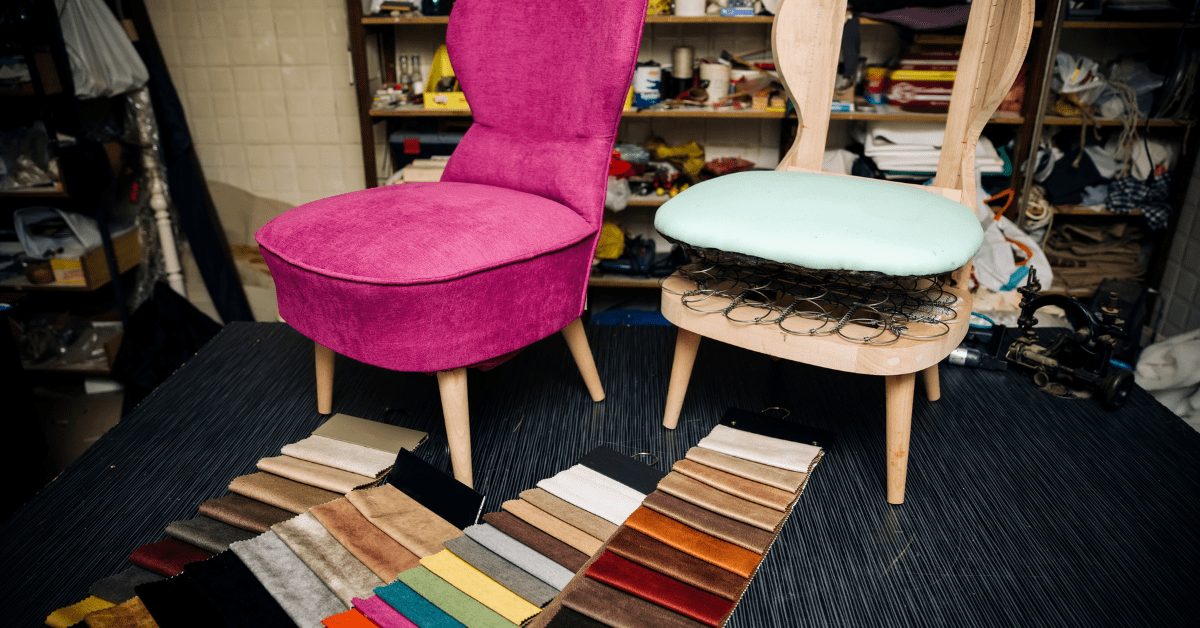
- Enhanced Comfort: Elevate the chair’s comfort and aesthetics by adding a fresh layer of foam padding. This extra padding not only improves the chair’s overall comfort but also enhances its appearance, giving it a plusher and more inviting look.
- Reupholstering Method: To commence the reupholstering process, secure the fabric to the chair frame. Use your staple gun to attach the fabric securely but evenly. Start on one side and work your way to the other, pulling the fabric taut to avoid wrinkles and ensure a smooth, professional finish.
- Attention to Detail: When reupholstering, pay special attention to the chair’s corners and edges. These are focal points, and it’s important to ensure they remain smooth and free from wrinkles. Tuck and staple the fabric neatly to create a polished and visually appealing result.
By following these steps diligently during the measuring, cutting, padding, and reupholstering phases, you’ll be well on your way to achieving a professionally reupholstered chair that combines both comfort and aesthetics in perfect harmony.
Finishing Touches

- Trim Excess Fabric: After securing the fabric in place, carefully trim any excess material. This step is vital to achieve a clean and polished appearance. Pay attention to details, ensuring that there are no loose or frayed edges that could detract from the chair’s overall look.
- Reattach Hardware and Decorative Elements: Reintroduce any hardware, buttons, or decorative elements that you removed during the stripping phase. This reassembly adds character and charm to your reupholstered chair. Make sure these elements are securely fastened, enhancing the chair’s aesthetics.
- Inspect for Perfection: Give your reupholstered chair a thorough inspection. Look for any loose staples, imperfections, or irregularities in the fabric. Address and correct any issues promptly to ensure a flawless final result.
Caring for Your Reupholstered Chair
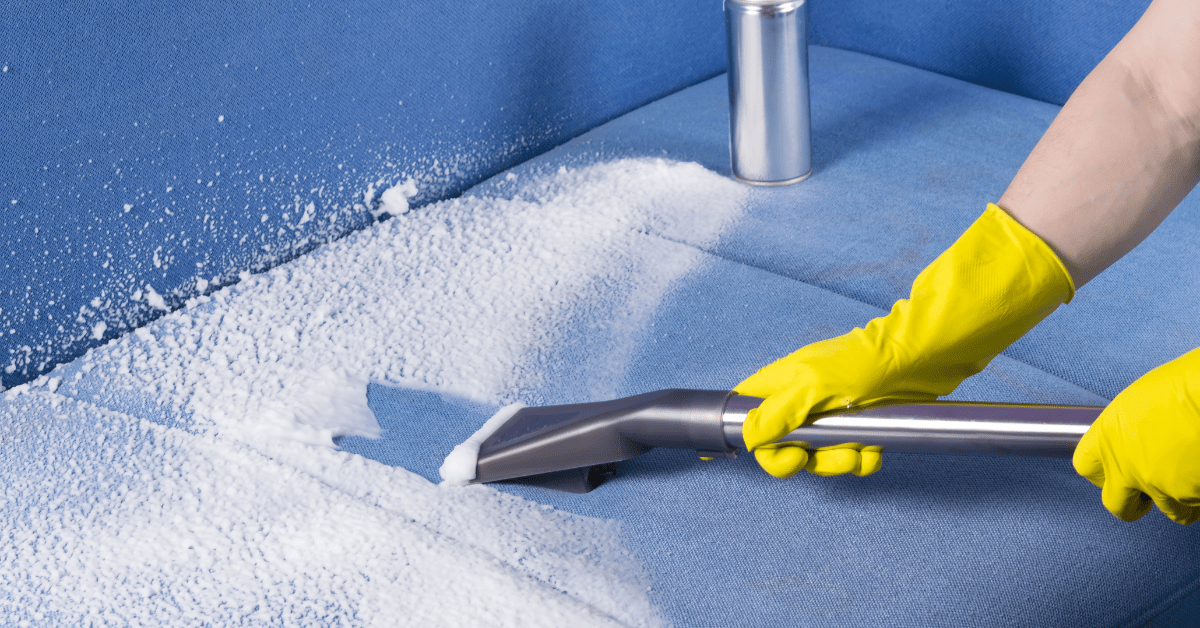
- Regular Maintenance: To keep your reupholstered chair looking its best, commit to regular maintenance. Use a vacuum or a brush to remove dust and dirt from the fabric. This simple practice will preserve the chair’s appearance and extend its lifespan.
- Spill Response: Address spills promptly to prevent staining. Follow the manufacturer’s cleaning instructions for the specific fabric you’ve chosen. Timely and appropriate cleaning measures will help maintain the chair’s pristine look.
- Consider Fabric Protectors: For added protection and longevity, consider using fabric protectors. These products create a barrier against spills and stains, making it easier to clean and maintain your upholstery. By investing in fabric protectors, you can extend the life of your reupholstered chair and enjoy its beauty for years to come.
Learning how to reupholster a chair can be a rewarding DIY project that transforms your space. By following the steps outlined in this guide, you can give your old, worn-out chair a new lease on life. Whether you’re aiming for a classic, modern, or eclectic look, reupholstering allows you to tailor your furniture to your personal style and home decor.
So, don’t hesitate to roll up your sleeves and embark on this creative journey. Reupholstering a chair is a fantastic way to inject new life into your interior space.





